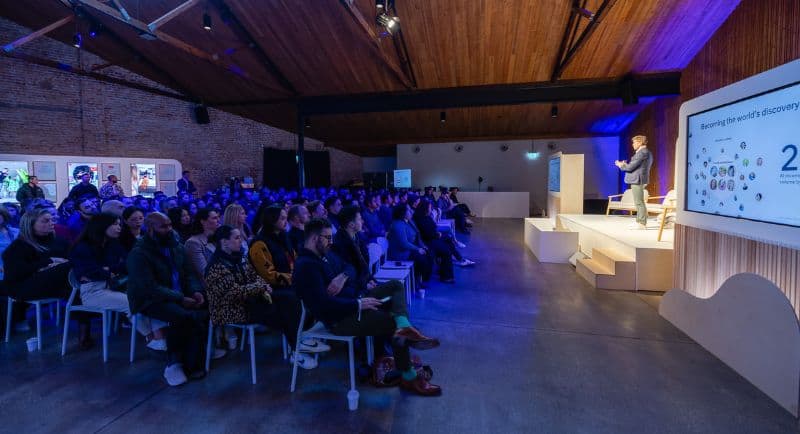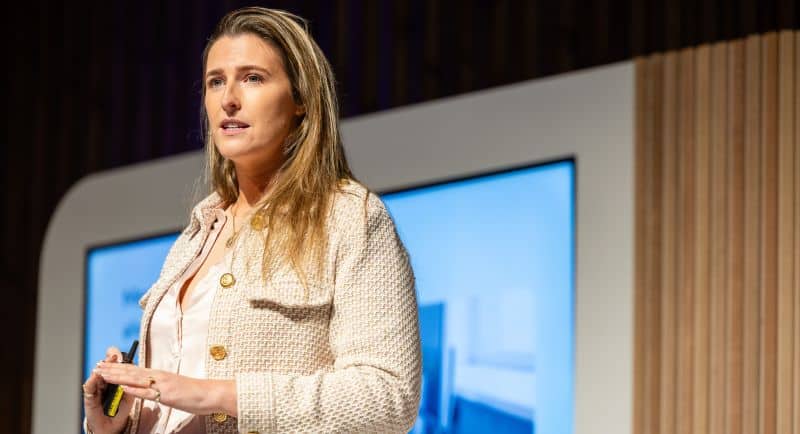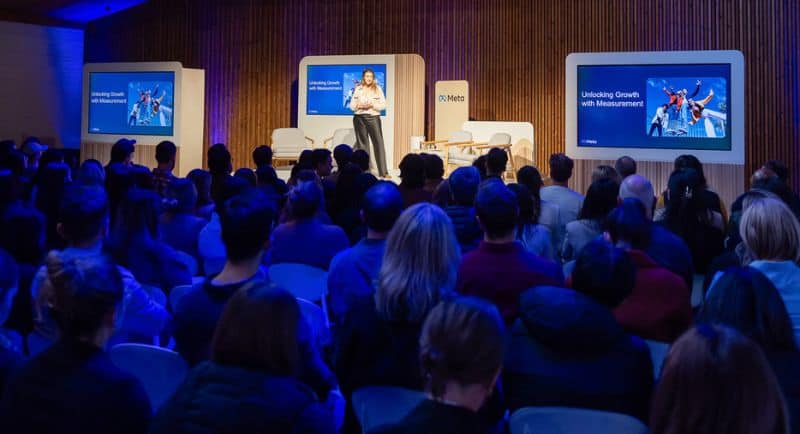Meta has seen a bumper last quarter with positive results, and to cap off the end of a rollercoaster financial year, the tech giant has unveiled its new offerings at its Performance Marketing Summit.
The Performance Marketing Summit, held in Sydney and Melbourne, with an upcoming one in Brisbane, will showcase new products and solutions from Meta to key partners.
The last 18 months have seen Meta undergo significant changes in the business – from restructures to new product launches and redesigns – and improved fiscal outcomes in Q2.
See Also: Meta reports total revenue is up $32.0 billion in Q2 results
Meta’s performance so far and the year ahead

Will Easton
Will Easton, Meta’s managing director for ANZ, began with a reflection on the company’s family of apps – Facebook, Messenger, Instagram, and WhatsApp – which has continued to grow across Australia and New Zealand, with 3 billion people logging in every day, and 3.8 billion people logging in monthly.
Easton highlighted three reasons why the company had seen strong and healthy growth across its family of apps, starting with tweaks to components of the discovery engine with the addition of an AI recommendation engine that looks at content a user is interested in and provides further information.
The second has been the boom in short-form videos, better known as Reels. Easton noted that 200 million people heavily engaged with the content, particularly in Australia. Rounding out Easton’s points is the addition of new products and services that meet their customer’s needs.
On the advertiser value side of the company, Easton noted that in addition to the changes in the company, Meta has focused on rebuilding its advertiser platform and ensuring the delivery of relevant results to customers.
The tech giant focused on investing progress in AI and contextual advertising. Easton said: “We spend a lot of time making sure contextually that our ad units fit within the formats and the platforms that we use.”
Easton provided an overview of their innovation roadmap, short-to-medium-term investment in AI and continued focus on the metaverse.
AI and the future of performance marketing
Ian Stone, product marketing lead of Meta ANZ, discussed how brands can capitalise on the tech company’s business solutions and how their investment in AI plays a part.
The AI Sandbox is currently only available in North America with selected partners. It is the first public generative AI offering to build creative.
“You start coming up with text variations, different ways of reaching audiences, generating backgrounds, and image outcropping. The capability of this when you start going across millions of small businesses, which don’t have creative agencies and don’t have graphic designers, start really levelling the playing field and helping small businesses,” Stone said
“This is in its infancy; it’s not something you can just buy at the moment. But I think it’s a great view of where our kind of gentle AI investments are going to lead to kind of in the near future,” he added.
Stone noted that Meta is honing in on buying outcomes and how that will drive towards point-of-sale ads, conversion or re-engagement.
“We’re trying to encourage advertisers to try and think about the way they set up advertising in different ways. The role of targeting when you’re buying an audience is really important to make sure that you’ve got efficiency and that you’re not wasting impressions. When you’re buying outcomes, detailed targeting can prohibit performance.
Stone noted that data is fundamental and that the ecosystem is changing with the onset of the cookie deprecation.
“The advancements we’ve made in conversions API, allowing advertisers to utilise their first-party data, is still key to performance marketing. Once it’s in, when you’re looking at our machine learning capabilities, the training that comes off the data is only as good as the seed of the data.
“It’s what leads to the modelling and the machine learning’s ability to get better with experience at driving an outcome that gives us server predictions and then gets the lowest outcome.”
Stone said that Meta is making it easy to understand how to buy through its Meta Advantage Suites, which launched last year.
“We’re forever bringing out kind of new areas advantage audiences launched this week. We’ll see different iterations coming through, but the main takeaway is that shopping and ad campaigns are end-to-end, automated solutions with every best practice hardwired.
“If you’re looking to sell a product online advantage, shopping campaigns will be the ticket. If you’re in the app space, and you want app acquisition or value optimisation and engagement, app campaigns are sensitive,” he said.
“Away from that, there’s loads of great marketing happening on our platform that fits outside that. We have individual levers that we’re encouraging marketers to try the right fit, whether by creative or the placement, part of our message Family Services and apps that it runs on to drive those positions,” Stone added.

Unlocking Growth with Measurement
Katie Forcey, client part at Meta, introduced the tech company’s Measurement 360 model, which is the new approach to helping marketers unlock growth by looking at a holistic approach and cross-referencing the results of multiple sources.
“Every marketer cares about driving profitable growth, especially in this macro economy, and it is about accurate measurement and the data underpinning it,” she said.
Measurement 360 is a framework that triangulates multiple sources – media mix modelling (MMM), experiments, and attribution – measuring across scope, accuracy, and speed.
“It’s a practical approach to organising and operationalising various measurement methodologies in a holistic way and making the most of each and minimising the individual deficiencies.”
Forcey noted that Meta’s successful marketers are using regular and ongoing experiments to help calibrate their MMM models and that attribution tools are using the best parts of each.
“They use the accuracy of incrementality to calibrate the scope of their trip learn models and the speed of attribution,” she said. This is to ensure day-to-day attribution tools are accurate and don’t compromise on the speed and the broad views across the channels,” she said.
Forcey concluded Meta’s innovation within the media measurement to drive profitable business growth involves:
• Adopting the Measurement 360 approach by triangulating methodologies and data sources.
• Applying the lens of incrementality to everything.
• Using experiments to calibrate other measurement methodologies.

Katie Forcey
Creative is the New Targeting
Carmela Soares, creative strategist at Meta, shifted the conversation to creativity and how it plays on the platform and in the company. She also discussed why the diversification of creative assets has had better reach and been more effective for brands.
Starting with the discovery engine, she noted that the AI part will have an estimated action rate that will serve a particular creative to an audience more likely to take action in a particular area.
“That means that the content of that creative and what’s in there to motivate the action becomes more important than ever. This is how we creatives, as humans, become a multiplier effect to effectiveness in this modern media landscape.
“Where diversification plays a part in this is people will have different motivations for their actions, or need or want a particular product, brand, or service. That’s when we start diversifying to make sure that you’re covering all the human truths behind a connection between a brand and a person.”
Soares noted that diversification can be achieved through visual direction, relevant messaging, and different placements. She noted that these components take a product-centric campaign to a human-first experience of creativity that adds incremental reach and brings new audiences on board.
“Now we create at the speed of culture. We build these campaigns based on culture on people on what’s human behind a product or a brand.
“That’s why we say creative is the new targeting. You don’t sit on the platform tweaking and manicuring all the audiences and the levers; you do that through your creative executions.”

